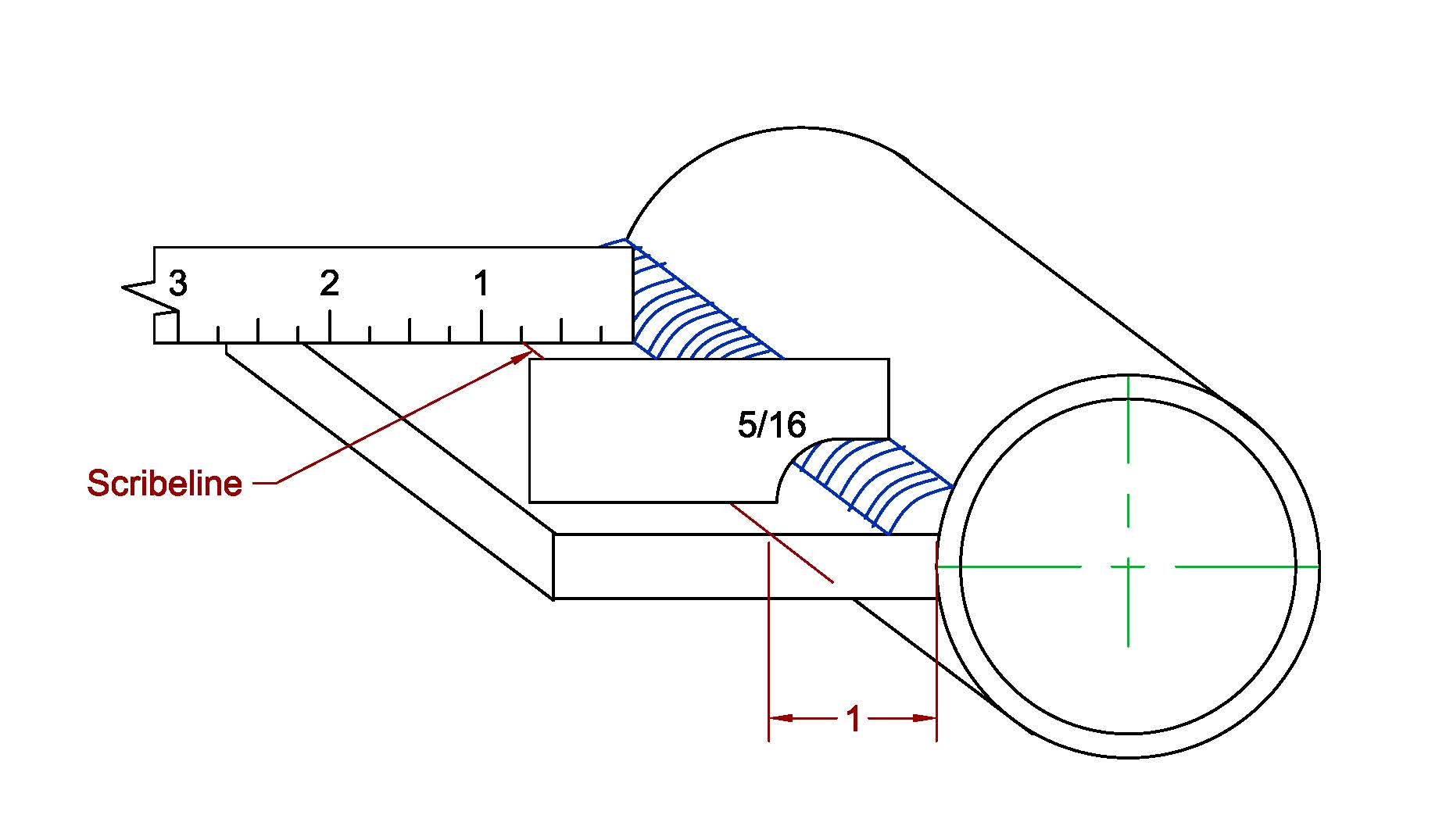I personally think that the plate thickness and the o.d. of the pipe need to be taken into consideration before we can determine whether it (radiused slope of the pipe) exceeds 100° or not, because the radiused slope of the pipe will increase as the o.d. of the pipe decreases . I don’t know what these dimensions are, based on the photo, so out of morbid curiosity, I scaled out an 8” std. pipe and a 1” thick plate. Then, where the plate is in contact with the pipe, I made a 1/4" horizontal mark on the pipe, which represents the horizontal toe of the 1/4” fillet weld. I then connected the two lines…. those two lines being (1) the point where the plate is in contact with the pipe, and (2) the toe of the1/4” weld. After making that line, I checked the degree of the angle, which was somewhere around 12° or so. Based on this, I believe that it’s still a fillet weld. I then made a 1/4” vertical line on the plate, which represents the vertical toe of the 1/4” fillet weld. Then I checked it with my 1/4” fillet gage. What I found is that the weld needs to be bigger due to the slight radius of the pipe. The 1/4” gage works at 90°, but not on the pipe. So I checked the weld size again using a 5/16” fillet gage, and the toes and the throat matched my 1/4” marks. The other thing is, on this example, as the plate gets thinner, say 1/2” thick rather than 1”, the 12° slope will be less.





